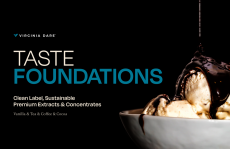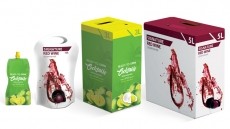Confusion drives consumers away from sugar, says industry body
'better for you', said the US Sugar Association, in its latest
attempt to recapture a part of the market lost to the growing
popularity of sweeteners.
In a statement published today, the industry body suggested that a general anti-sugar movement has resulted in mistaken consumer perceptions of the true calorie content of sugar.
Most consumers are unaware, for example, that a teaspoon of all natural sugar contains only 15 calories, it said.
"In research conducted in October 2006, The Sugar Association found that the majority of consumers thought sugar contained a whopping 70 calories per teaspoon. That's a huge difference from 15. How did we become so misinformed? Have all the sugar-free products, artificial sweeteners, anti- sugar diets and sugar-buster books biased our perception?" said the statement.
The association, whose member companies are producers and growers of sugar in the US, cited a recent study commissioned by Associated Press, which asked five nutrition scientists to evaluate newly introduced 'reduced sugar' kids' cereals.
The scientists found that the reduced sugar version of popular kids' cereals provided no reduction in calories or improved nutritional content over the regular sugar versions. The replacement ingredients provided the necessary bulk and texture to the reduced sugar cereals but offered no nutritional or calorie advantage, it said.
"There is a lot fact and fiction floating around. With messages being implied, it's hard to know what to believe," it added.
According to the Sugar Association, consumers should carefully read labels to understand the composition of products, and should consume sugar as part of a healthy, balanced diet.
"Just because a food contains sugar does not make it a food to avoid. All- natural sugar, with just 15 calories a teaspoon, can be part of an active and healthy lifestyle," it said.
However, while the Sugar Association is concerned with promoting the goodness of sugar as part of a healthy diet, consumer trends since the late 1970's prove that not everyone is convinced.
According to the USDA/ERS, sugar consumption has been in decline for almost three decades, reaching a low in 1986 when it dropped by almost 50 percent to just over 40 pounds per person.
Concerns about obesity, based on mounting evidence that the phenomenon is becoming an epidemic, have been a primary consumer incentive to avoid sugar. The disease, which is thought to lead to health conditions such as heart disease and diabetes, currently affects more than 64 percent of the nation's adult population and 16 percent of children.
Rising health concerns in society have seen consumers turn towards sugar free products, and food makers introduce zero-calorie or low-calorie sugar substitutes into their new product formulations.
Indeed, the competitive sweetener industry is enjoying considerable growth above the industry average as consumers turn away from sugar-heavy foods and beverages to 'lite' versions.
According to market analysts Freedonia, the sweetener market is set to grow at around 8.3 per cent year on year until 2008, with sales rising from a small base of $81m in 1998 to $189m in 2008.
But the Sugar Association, which has long battled against making sugar a scapegoat for the obesity crisis, maintains that sugar is superior to other sweeteners as it is an entirely natural substance.
Indeed, it has repeatedly fought against the sweetener industry. As well as being involved in a long standing spout of legal battles with the distributor of UK-based Tate & Lyle's popular suralose sweetener, the trade body has also filed a number of petitions with the Food and Drug Administration (FDA).
One such petition filed this year requested the establishment of a clear definition for the use of the term 'natural' on food and beverage product labels, which the association claimed was being used to mislead consumers into believing some artificial sweeteners were natural.
And last year the Sugar Association said it wanted the FDA to introduce more aggressive labeling regulations that would split out the different sugars and sweeteners on the nutritional facts panel.













